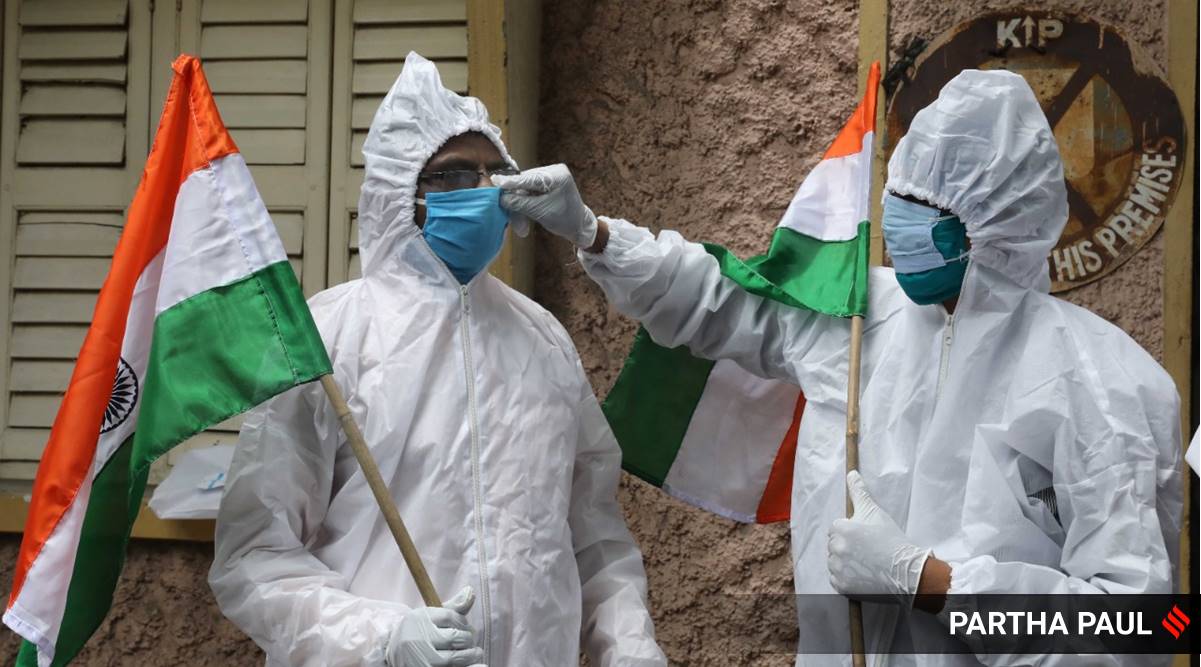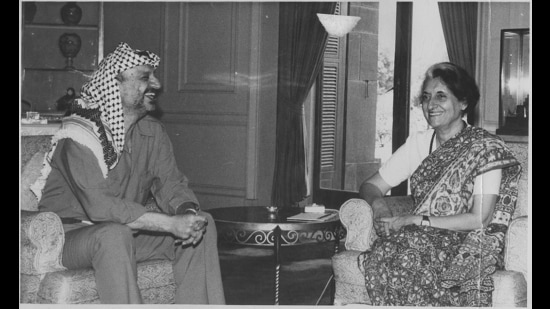 |
| Pic: Indian Express |
“India is gasping for oxygen. Thanks to GOI’s (Government of India) incompetency and complacency.” At any other time, Rahul Gandhi’s comment might have been construed as point scoring by a leader of an opposition party. Not now.
In the latest report of April 27, there have been 323,144 fresh cases. In a span of 24 hours, 2,771 people have died. Many could have been saved.
People are dying outside hospitals because there are no beds available. A big private hospital known for its celebrity patients has transformed its lobby into a Covid ward. In other hospitals patients are sharing beds; some are getting oxygen while lying down on the floor or even in an autorickshaw parked outside. These are the lucky few. Many are still begging for help.
Hustlers see this as an opportunity. A sting operation in a city of Gujarat revealed a hospital bed racket. One desperate relative was told by a hospital worker, “I won’t take anything less than Rs 9,000. You will get the bed in 30 minutes.” $120 is a lot of money for the middle class. Imagine, then, the plight of the poor.
In March last year, when Prime Minister Narendra Modi announced a lockdown, giving Indians a mere four hours to stock up, the poor had no money to buy more than a meal. Overnight they were rendered jobless, and most of the migrants from other cities subsist on daily wages. 744 million earn Rs. 44 (58 pennies) a day. They live in sub-human conditions where a quarantine would be impossible.
There are an estimated 1.8 million homeless people in India. Vaccination programmes do not include them. They need to produce proof of citizenship and residence; they have none. This is the reality that policy papers and party manifestoes do not address adequately.
If last year in March, Modi was flaunting Donald Trump at public gatherings, this year he and other ministers held massive election rallies.
Last year the home minister denied that the virus was a threat; this year he denied that there was a shortage of vaccine. The PM announced a ‘tika utsav’, a vaccination festival, in an irony that escaped him because India has had to grant emergency import to the Sputnik vaccine.
Last year the PM asked us to clap and bang thalis – steel plates – to honour the medical staff. People came out in large numbers to dance and celebrate what they assumed to be the end of Covid when the truth was a shortage of N95 masks and PPE kits for the doctors and nurses they were applauding.
In the pandemic scenario, the government’s failure is not merely short-sightedness, but pig-headedness.
Politicking in India includes pandering to religious sentiments. If these sentiments are about the majority, then leaders just look the other way.
Even as India was struck by a surge in cases with a new virus strain, 3.1 million devotees bathed in the holy river Ganga on April 12 during the ongoing Kumbh Mela. The fair takes place once every twelve years. This time it was brought forward by a year because the stars in the galaxy apparently deemed it appropriate. The official website claims that “in such a cosmic occurrence, bathing in the Ganga sets human beings free from the cycle of birth and death”.
Sanjay Gunjyal, inspector general of police in the state of Uttarakhand, sounded helpless: “We are continuously appealing to people to follow Covid-appropriate behaviour. But due to the huge crowd, it is practically not possible to issue challans (fines).” Even more frightening is his understanding that were the cops to enforce such norms there might be a “stampede-like situation”.
For such whimsies, the state has had to deploy 20,000 police and paramilitary personnel to keep an eye on the 600 acres across which the festival is held. Some of the sadhus (many walking naked) have tested positive. The chief minister of the state showered flowers on them and sought their blessings. Before the start, he had assured devotees that “unnecessary” restrictions would be removed and “faith of devotees will overcome the fear of Covid-19”.
Most Indians are poor, illiterate and fatalistic. Last year it was cow urine drinking parties where the virus was given a karmic twist. “Coronavirus has come because of the people who kill and eat animals. When you kill an animal, it creates a sort of energy that causes destruction in that place.” Now the chief minister of Gujarat, when asked about the logic behind night curfew, replied, “Corona has originated from bats who can see only in night. Therefore the virus comes out only in night (sic).”
Godmen and political charlatans take full advantage of this. Baba Ramdev, a yoga guru who has built an Ayurveda empire due to his proximity with senior leaders, launched Coronil as a cure for Corona. Ministers were present to stand by him, including the health minister. He claimed he had research papers on it but showed none. Later he was forced to market it as an immunity booster and not a cure. But the damage had been done. There was a daily demand for a million packages. It wasn’t as much trust in the efficacy of the product as it was blind faith in a ‘holy’ man.
But politicians who have tested positive aren’t using these indigenous palliatives. They are consulting qualified professionals, relying on real science.
Religion forms the subcutaneous layer of all politics in India. When the PM addressed the nation recently, he said, “Tomorrow is Ram Navami. Maryada purushottam Ram's message is for us to be disciplined. It is also the 7th day of Ramzan. The festival teaches us patience and discipline. Patience and discipline are both needed to fight Covid.”
His government has showed no such qualities. For a while it appeared that even the supporters of the ruling party desperate over the loss of loved ones had tired of the mishandling. That the virus would prove to be a great leveller. That they were waking up and could be the resistance. But the rightwing was back to its old ways.
When Naveen Razak and Janaki Omkumar, two medical students, danced to Boney M’s Rasputin and the video went viral, the rightwing started the hashtag #DanceJihad. It was seen as a jihad because the girl was a Hindu, the boy a Muslim. A lawyer said, “I smell something wrong here. Janaki’s parents should be careful. And if they are careful, they won’t have to be sorry later.”
Social media rose to the occasion. It pronounced that the two young students were a shining example of communal harmony when all they had wanted to do was spread some cheer around.
When Pyare Khan arranged for oxygen worth Rs 8.5 million, his past as a slumdweller was raked up and his faith was highlighted. In fact, his act was referred to as “oxygen zakat” – Muslims offer zakat, a portion of their profits, during the month of Ramadan. Some liberals on social media platforms pointed this out as a reason why Muslims should not be mistrusted. They do not realise how problematic it is to expect a community to be held up to a standard the majority never has to.
Heart-warming stories may act as a necessary salve, but they sometimes deflect from the harsh reality. A hospital’s ICU unit caught fire. An eyewitness said there were two nurses, but no doctors around. All he could see was dead bodies. 14 patients died in the fire.
Priests are refusing to perform the last rites. In a moving account, a journalist recounts how they had to bathe her dead grandmother before the cremation: “My father cranked up the AC of the car to keep her body protected from heat…My mother, two of her sisters and I tied a bedsheet from the car to a pillar in the basement to create a private space for that. We did all we could to give her as dignified a farewell as possible.”
In many places there is a shortage of burial space and wood for cremation. Death, as much as life, is defenceless.

